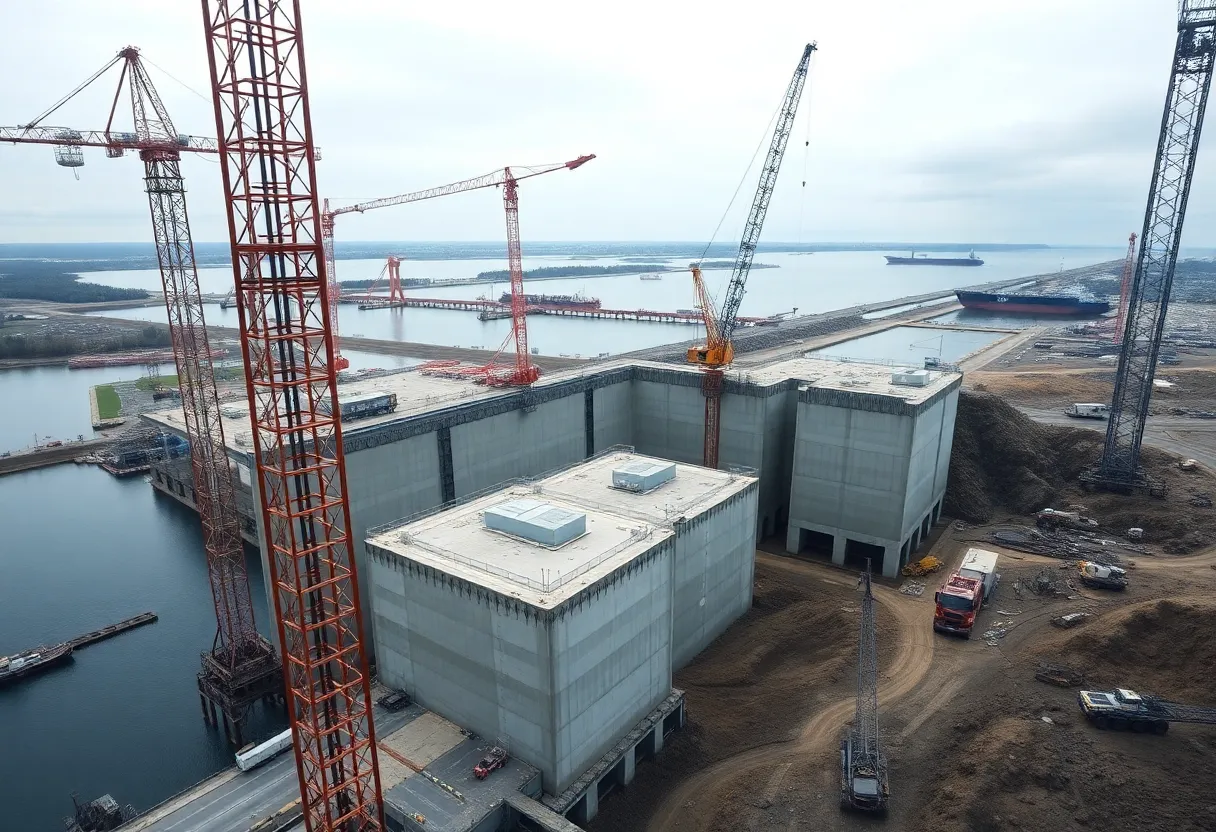India, September 13, 2025
News Summary
A wave of nearly 80 mainboard IPOs raising about INR 1,630 billion is reshaping prospects for startups and investors in India. Market participants say expanded public-market access can broaden exit options and alter fundraising terms, though many early-stage VCs still prefer pre-seed and seed deals where they can shape product and strategy. Investors highlight AI as a practical enabler for millions of small businesses, creating new addressable markets. While IPO interest grows, profitability among candidates is mixed and some firms caution about a crowded B2B AI SaaS market. Observers are watching filings, retail appetite, and AI-driven productivity gains.
IPO Pipeline Seen as Game-Changer for Indian Venture Investing, Says Good Capital Leader
The investment community is watching a growing IPO pipeline as a potential lever to reshape how startups in India grow and how investors participate in scale. A leading venture partner notes that the path to public markets could alter the startup lifecycle, turning IPO milestones from distant dreams into reachable objectives for several high-potential firms. At the same time, a recent market study confirms momentum, highlighting a surge in mainboard listings and a substantial rise in capital raised when comparing current figures to the prior year. The combination of rising activity and cautious profitability signals is shaping a nuanced outlook for both founders and investors.
In the view of Arjun Malhotra, a general partner at a prominent early-stage fund, the IPO pipeline could act as a powerful catalyst for the broader ecosystem. He emphasizes that readiness for public markets is not merely about hitting revenue targets; it is about demonstrating scalable business models that can justify public-market valuations while still delivering value to customers and partners on the ground.
A recent report from a global advisory firm shows that almost 80 mainboard IPOs were recorded, a figure that edged above the previous year’s tally. The same report notes a dramatic rise in aggregate capital raised, reaching about INR 1,630 billion, a sharp jump from INR 619 billion in the year before. The data underscores a broad market appetite for public listings as more startups stand at the crossroads of growth and liquidity. These numbers point to a shift in tempo, with several companies advancing toward IPO readiness and others building processes that could withstand the scrutiny of public markets.
Despite the renewed excitement around IPO momentum, the leading investor stresses that the core focus remains firmly planted on early-stage work. The approach centers on a “blank canvas” moment when founders are deeply immersed in a problem but have not yet settled on every solution. Early-stage investing, in this view, offers the greatest potential to influence outcomes—not just with capital, but with networks, mentorship, and practical guidance that align startups with India’s real-world complexities.
The early-stage thesis is deliberately sector-agnostic, motivated by a behavioral rather than vertical lens. The emphasis is on teams that understand how to navigate an intermediary-led economy and, with the aid of advancing AI, solve practical problems at scale. Good Capital highlights that trust in people can outperform faceless platforms in a country with a large, relationship-driven business landscape. The firm favors ventures that empower on-the-ground partners instead of attempting to replace every intermediary.
Artificial intelligence is cited as a game-changer for the fund’s approach. Rather than merely automating tasks, AI is viewed as a platform for enabling new business models and widening the set of problems that can be addressed at lower costs. This aligns with the reality that India’s vast economy includes a sizeable base of small businesses demanding modern workflow and system design—solutions historically out of reach due to affordability constraints. The belief is that AI can now serve as a practical project manager for these businesses, guiding operations and coordination in a way that was previously unfeasible.
India’s small-business landscape is immense, with estimates suggesting a population of more than 63 million small enterprises. The current era offers a chance to design workflows and systems that significantly improve efficiency without forcing every firm to bear heavy upfront costs. This context is driving a more pragmatic approach to how AI, automation, and analytics can be deployed to create tangible gains for on-the-ground partners across sectors such as renewable energy, education, construction management, and logistics.
Good Capital’s investment footprint includes a spectrum of sectors, such as solar energy projects, education platforms, construction-management solutions, and logistics technology. The team maintains a slight tilt toward consumer-oriented ventures, while staying wary of the crowded B2B AI SaaS space, where many offerings can look similar in a crowded market. The concern is that while B2B AI SaaS may appear safer, the real opportunity lies in unlocking broader economic potential by addressing the needs of India’s substantial base of small businesses rather than pursuing a portfolio of near-identical solutions.
Beyond the startup ecosystem, data from a market-tracking publication shows that 42 IPO-bound startups have been identified for readiness activities such as filing or preparing draft documentation. Of these, about half report positive profitability indicators, while the other half are still working through losses in the latest financial disclosures. The mix illustrates that investors are increasingly looking beyond the bottom line to assess growth potential, unit economics, scalability, and the ability to sustain cash flow as companies approach the listing stage.
Analysts highlight several real-world signals that influence IPO readiness. Growth metrics, margin improvement potential, and cash-flow management are weighed alongside brand strength, proprietary technology, and market position. Observers say that while profitable quarterly results are compelling, robust unit economics and scalable business models can be equally persuasive to investors evaluating the path to an IPO. In markets with high growth expectations, a well-articulated plan for leveraging AI to improve efficiency can be a differentiator.
The broader economic backdrop—where housing affordability and urban demand intersect with wage dynamics—creates a nuanced climate for investment and entrepreneurship. Policymakers and market participants alike are watching how these macro trends influence consumer behavior, employment, and the appetite for risk in growth-stage ventures. In this environment, the IPO pipeline is one of several levers that could influence how startups allocate capital, prioritize growth initiatives, and partner with investors who bring more than money to the table.
In sum, the IPO pipeline is shaping expectations in Indian venture investing, acting as a potential accelerator for founder ambition and market access. Yet the emphasis on early-stage value creation remains a core theme for Good Capital and similar funds. By combining hands-on guidance with strategic use of AI and a practical view of India’s intermediary-driven economy, the emphasis is on sustainable growth that serves both startups and the broader business community.
Key investments and market signals at a glance
The portfolio includes ventures spanning renewable energy, education, construction management, and logistics, reflecting a broad belief in technology-enabled efficiency at scale. Market indicators point to a rising public-market appetite, with a notable jump in capital raised alongside the uptick in listings. The focus on early-stage impact, coupled with disciplined attention to unit economics and real-world applications of AI, defines the current stance on how India’s venture ecosystem may evolve through public-market milestones.
Recent retail and investor participation context
Industry observers expect continued retail engagement, with expectations that strong unit economics and scalable growth will draw interest from a broad base of investors. The evolving mix of profitability and growth signals across listed and pre-listed startups suggests a disciplined approach to evaluating IPO readiness, one that recognizes both the opportunities and the limits of rapid expansion in a complex, trust-driven market.
FAQ
- What does the IPO pipeline mean for Indian venture investing?
- It represents a potential accelerant for startups to access public markets, signaling a shift in growth expectations and offering liquidity opportunities for early investors.
- How many mainboard IPOs were reported and what was the capital raised?
- Reports indicate around eighty mainboard IPOs with total capital raised in the approximate range of INR 1,630 billion, marking a significant year-over-year increase.
- What is the focus of Good Capital under Arjun Malhotra?
- The focus is on early-stage investing, with emphasis on founders who work with India’s realities, emphasizing trust-based relationships and practical guidance over purely capital provision.
- How is AI viewed in this investment approach?
- AI is seen as a catalyst that can enable new business models and function as a project-management layer for small businesses, improving efficiency and scalability.
- What is the stance on B2B AI SaaS within this approach?
- There is caution about a crowded space with similar solutions; the emphasis remains on unlocking broad economic potential by addressing real-world needs of small businesses rather than chasing a trend.
- What do profitability and IPO-readiness signals look like for IPO-bound startups?
- Profitability is not the sole determiner; investors often weigh unit economics, scalability, cash flow, brand strength, and the ability to sustain growth as they evaluate IPO readiness.
Key features of the post
| Feature | Description | Impact on Venture Ecosystem |
|---|---|---|
| IPO momentum | Near 80 mainboard IPOs with a substantial rise in capital raised year-over-year. | Signals increased liquidity paths and broader market participation. |
| Early-stage focus | Emphasis on pre-seed and seed-stage investing with strong hands-on support. | Potentially accelerates company building and de-risks scaling for founders. |
| AI as enabler | AI is viewed as a practical tool to enhance workflow and enable new business models. | Shifts product development toward AI-driven efficiency for small businesses. |
| Economy drive | India’s intermediary-led economy is central to how startups operate and scale. | Encourages models that collaborate with local partners rather than displacing them. |
| Profitability signals | A mix of loss-making and profitable IPO-bound startups observed in market tracking. | Prompts nuanced evaluation beyond net profitability, including unit economics and growth potential. |
| Sector exposure | Investments span solar, education, construction management, and logistics. | Demonstrates a diverse attempt to apply technology across real-world sectors. |
Deeper Dive: News & Info About This Topic
Additional Resources
- Times of India: 104x Urban Company’s IPO most subscribed — offer in India this year
- Wikipedia: Urban Company
- Reuters: India eases foreign investors’ entry, lowers minimum size for large IPOs
- Encyclopedia Britannica: Securities and Exchange Board of India
- Bloomberg: Indian services firm Urban’s $216 million IPO sold within hours
- Google Search: Urban Company IPO 2025
- Bloomberg: India eases minimum equity offer size for mega-cap IPOs
- Google Scholar: India IPO minimum offer size 2025
- Financial Express: Half of India’s IPO-bound startups in losses
- Google News: India IPO startups losses 2025





